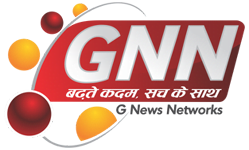Weak Didayi tribe, ‘wrongly’ bracketed below Poraja group, craves for id
For the previous ten years, each Friday, Roton (52) (title modified) treks about 15 km carrying a head load of pumpkins he grows on his half-acre land to do two issues. First, promote the pumpkins on the weekly shandy, and second, verify the checklist on the Village Income Officer’s (VRO) workplace to see if his title is included within the checklist of Significantly Weak Tribal Teams (PVTG). Each time, nonetheless, he comes again dejected and indignant, as he finds that his title has been included below the tribal group of Poraja.
He hails from the tribe referred to as the Didayi and each the Didayi and one other tribe, Pengu, who, regardless of being completely different from the remainder of the tribes within the Japanese Ghats, discover that they’ve been listed below the tribal widespread head of Poraja, hurting the very existence of the Didayis and Pengus.
“We’re completely different from each different tribe inhabiting the Japanese Ghats valleys. Our language is completely different, our tradition is completely different, and we’re geographically and economically secluded. Then why embody us below the Porajas? We must always have our personal id, and we have now been preventing for it for over a decade,” he says.
There are about six PVTGs in Andhra Pradesh, 4 of which reside within the Alluri Sitharama Raju (ASR) district. The ASR district was not too long ago bifurcated from the erstwhile Visakhapatnam district.
The full space of ASR district is round 12,251 sq km, and about 6,800 sq km of this was carved out of Visakhapatnam district. Lined by thick and pristine forest, the world was referred to as ‘Visakha Company’ by the British since its administration was below an English Agent. The time period ‘Company’ has caught, and to this point, it’s referred to as the company space, the place as soon as the banned LWE (left-wing extremist) group of the CPI (Maoist) had held appreciable sway.
Geographically segregated
Appanna hails from a village referred to as the Rangabayalu, situated on the Rangabayalu hill vary, perched at about 910 Imply Sea Degree (MSL). The Didayis reside on the Rangabayalu hill vary, which homes about 11 Didayi villages or hamlets, and the whole inhabitants is between 1,900 and a couple of,000. The Pengus, then again, inhabit the Lakshmipuram hill vary, which has about 14 Pengu villages with a complete inhabitants of about 2,400. Most villages in each the hill ranges haven’t any street connectivity, and the tribals need to trek about 18 km to succeed in the closest street level.
For Appanna, the closest public well being centre (PHC) is about 21 km away, at Laburru, and the sick are compelled to both trek all the best way or be carried on ‘dolis’. The geographic seclusion additionally hinders them from availing of many authorities welfare schemes. That’s the reason Appanna has to trek for about 15 to 18 km to promote his produce at Munchingput, the mandal headquarters, says Professor P.D. Satya Pal, chairman of the Division of Anthropology, Andhra College, who has achieved appreciable analysis on the tribes within the Japanese Ghats and within the State.
They’re one of many poorest tribes, as they’re geographically secluded, he provides.
Language
The language of the Didayi is completely different from that of most different tribes. They’re trilingual and converse the Didayi language, which belongs to the Mundari (Austro-Asiatic) household of languages along with Telugu and Desia Oriya (the tribal dialect of Odisha), as Rangabayalu hill vary borders the State of Odisha.
There isn’t a cause why the Didayis must be included below the Porajas. It hurts their very existence, and their id is misplaced, says the professor. “United Nations Everlasting Discussion board on Indigenous Points in 2010 sought to redefine the agenda of coping with tribes as ‘Growth with Tradition and Identification’, and this must be adopted. We have now represented it to the State authorities, and the suggestions need to be forwarded to the Union authorities. However it seems that it’s nonetheless pending on the State-level,” he provides.
As per norms, any such proposal for inclusion should originate from the respective State governments. The proposal is shipped to the Union Tribal Affairs Ministry, which then sends it to the Workplace of the Registrar Common of India (ORGI).
Social exclusion
Different tribes, such because the Bagathas and the Gadabas, discriminate towards the Didayis as a result of they take into account them to be Porajas and tribals from the decrease rings of the tribal hierarchy.
We’re not Porajas, however as a result of we’re categorised as them, we additionally face discrimination at numerous boards, together with on the weekly shandies, says Satyanarayana a Didayi from Kusumputtu village.
The Didayis are additionally completely different culturally. Their marriage system is completely different. They nonetheless observe the bride value system, and ladies play a dominant function within the household and society, not like different tribes. They observe the traditional system of burying the lifeless with grave items and erecting ‘Dolmen cists’, says Prof. Satyapal.
He says they’ve so many distinct options, and it’s time they got their id.
A senior official on the Built-in Tribal Growth Company (ITDA), Paderu, says that an enumeration of the Didayis has been achieved, and the suggestions have been submitted to the authorities involved.




